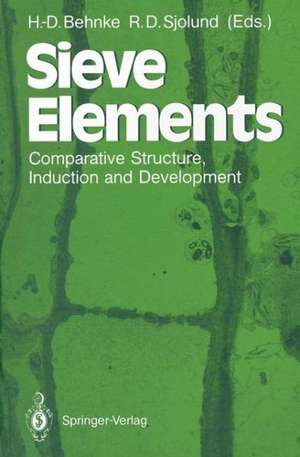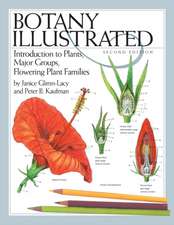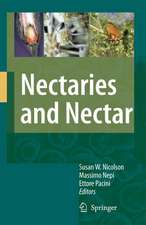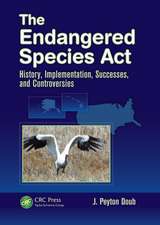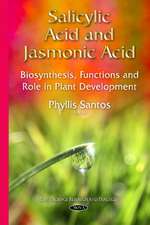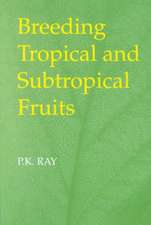Sieve Elements: Comparative Structure, Induction and Development
Editat de H. D. Behnke, R. D. Sjolunden Limba Engleză Paperback – 23 noi 2011
Preț: 641.53 lei
Preț vechi: 754.74 lei
-15% Nou
Puncte Express: 962
Preț estimativ în valută:
122.76€ • 128.60$ • 101.74£
122.76€ • 128.60$ • 101.74£
Carte tipărită la comandă
Livrare economică 09-23 aprilie
Preluare comenzi: 021 569.72.76
Specificații
ISBN-13: 9783642744471
ISBN-10: 3642744478
Pagini: 320
Ilustrații: XIII, 305 p.
Dimensiuni: 155 x 235 x 17 mm
Greutate: 0.45 kg
Ediția:Softcover reprint of the original 1st ed. 1990
Editura: Springer Berlin, Heidelberg
Colecția Springer
Locul publicării:Berlin, Heidelberg, Germany
ISBN-10: 3642744478
Pagini: 320
Ilustrații: XIII, 305 p.
Dimensiuni: 155 x 235 x 17 mm
Greutate: 0.45 kg
Ediția:Softcover reprint of the original 1st ed. 1990
Editura: Springer Berlin, Heidelberg
Colecția Springer
Locul publicării:Berlin, Heidelberg, Germany
Public țintă
ResearchCuprins
1 Algae.- 1.1 Requirement for Medium-Distance and Long-Distance Transport in Algae.- 1.2 Medium-Distance Transport.- 1.3 Long-Distance Transport.- 1.4 Conducting Cells of Red Algae.- 1.5 Conducting Cells in Brown Algae.- 2 Mosses.- 2.1 Introduction.- 2.2 General Organization of Conducting Tissues in Mosses.- 2.3 Structure of Sieve Elements.- 2.4 Associated Parenchyma.- 3 Seedless Vascular Plants.- 3.1 Introduction.- 3.2 The Sieve-Element Protoplast.- 3.3 The Wall.- 3.4 The Sieve Areas.- 3.5 Parenchymatous Cells Associated with the Sieve Elements.- 3.6 Longevity of the Sieve Elements.- 3.7 Comments on Terminology.- 4 Conifers.- 4.1 Introduction.- 4.2 General Description.- 4.3 Development of the Sieve Cell.- 4.4 Strasburger Cells.- 5 Cycads and Gnetophytes.- 5.1 Introduction.- 5.2 Cycads.- 5.3 Gnetophytes.- 6 Dicotyledons.- 6.1 Introduction.- 6.2 The Sieve-Tube Member Protoplast.- 6.3 The Wall.- 6.4 The Sieve Plate.- 6.5 The Lateral Sieve Areas.- 6.6 Parenchymatous Cells Associated with Sieve-Tube Members.- 6.7 Longevity of Sieve-Tube Members.- 7 Monocotyledons.- 7.1 Introduction.- 7.2 Ontogeny.- 7.3 The Protoplast.- 7.4 Cell Wall.- 7.5 Thick-Walled Sieve Elements.- 7.6 Sieve Plates.- 8 Sieve Elements in Internodal and Nodal Anastomoses of the Monocotyledon Liana Dioscorea.- 8.1 Introduction.- 8.2 The Vascular Construction in the Aerial Stem of Dioscorea.- 8.3 The Specific Composition of Phloem Anastomoses.- 8.4 Ultrastructure of the Sieve Elements of Anastomoses.- 8.5 Parenchymatous Cells Associated with the Sieve Elements of Anastomoses.- 8.6 Some Physiological Implications of Nodal Anastomoses.- 9 Sieve Elements in Plant Tissue Cultures: Development, Freeze-Fracture, and Isolation.- 9.1 Introduction.- 9.2 Phloem Function in Vitro.- 9.3 Phloem Development in Callus Tissues.- 9.4 P-Protein, Callus Phloem and Wounding.- 9.5 Freeze-Fracture Studies Using Callus Sieve Elements.- 9.6 Sieve-Area Pores.- 9.7 The Sieve-Element Reticulum (SER).- 9.8 Isolation and Partial Purification of Callus Sieve Elements.- 9.9 Antibody Formation Against Callus Sieve Elements.- 10 Wound-Sieve Elements.- 10.1 Introduction.- 10.2 Tissue Changes During Wound-Phloem Development.- 10.3 Cytoplasm of Wound-Sieve Elements.- 10.4 Symplastic Connections of Wound-Sieve Elements.- 10.5 Companion Cells.- 10.6 Comparison Between Wound-and Bundle-Sieve Elements.- 11 Sieve Elements of Graft Unions.- 11.1 Introduction.- 11.2 Grafting Procedure.- 11.3 Histology and Cytology of the Graft Union.- 11.4 Function of Phloem Connections in Graft Unions.- 11.5 Questions Concerning the Mechanism of Sieve-Element Formation in Graft Unions.- 12 Sieve Elements in Haustoria of Parasitic Angiosperms.- 12.1 Introduction.- 12.2 Phloem in the Haustorium of Cuscuta.- 12.3 Development of Haustorial Sieve Elements.- 12.4 The Contact Hypha of Cuscuta.- 12.5 Phloem in the Haustoria of Different Parasitic Plants.- 12.6 Comparative Aspects.- 13 Phloem Proteins.- 13.1 Introduction.- 13.2 P-Protein.- 13.3 Other Phloem-Specific Proteins.- 13.4 Biochemistry of Phloem Proteins.- 14 Phloem Evolution: An Appraisal Based on the Fossil Record.- 14.1 Introduction.- 14.2 Phloem of Vascular Cryptogams.- 14.3 Gymnosperm Phloem.- 14.4 Conclusions — Phloem Phylogeny.
